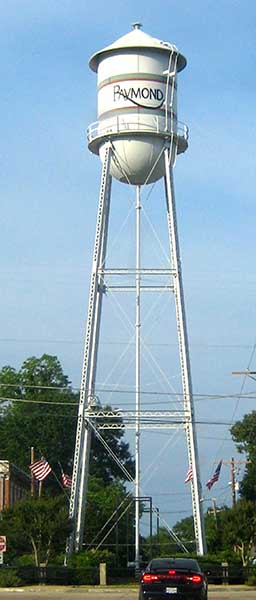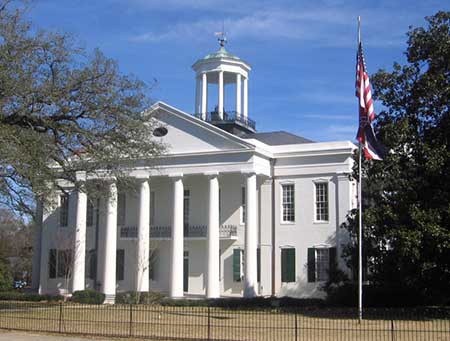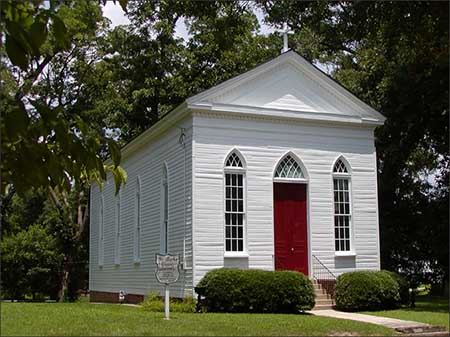
It was Mother’s Day, and I was headed for Hinds County, Mississippi, coming up from The Big Easy via Bay Saint Louis on the Gulf Coast. I passed through Hattiesburg in the mid-afternoon where the two city police officers, one white and one African-American , had been gunned down the night before. Flags were at half-staff, but no other signs of disturbance were observable.
The reason for the timing of this jaunt was the presence of a old shipmate who has kin in the town of Raymond, and some of the attendant family business to be done. I had my reasons to see the town, and this was an opportunity that I could not pass up. The other odd coincidence was the date- the battle had been fought on the 12th of May, and the meteorological conditions on the field for the visit would be very similar to the ones that the soldiers experienced 152 years ago.
For those of you that care, the county was a product of western expansion in the first part of the new 19th Century, established in 1821 and named in honor of General Thomas Hinds. Specifically, I was headed to a Holiday Inn Express in Clinton, 7.1 miles from Raymond, since that is as close as the interstate and the modern version of civilization get to the place.
The land of Hinds County was graciously ceded to the United States by the Choctaw Indians in 1820. The subsequent economy was based largely on the plantation system and The Peculiar Institution, as well as proximity to the famed Natchez Trace that could be used to transport goods to the waterways.
Good order being important to any society that relied on that for economic activity, the Mississippi legislature provided for the selection of three commissioners to select a site for the courthouse and jail for the county, and to locate the same either at Clinton, or “within two miles of the center of the county.”
The Commissioners determined the center of the county should be its seat, and to be on Snake Creek. They named the site Raymond, for General Raymond Robinson of Clinton who gave up his prior claim to the land. The Court and Jail were appropriately sited, and the young town grew and prospered as a seat of justice for Hinds County. The courthouse, which remains an imposing Greek revival structure, was completed with skilled slave labor in 1859, and is now on the National Register.

In May of 1863, Raymond became a speed bump for Unconditional Surrender Grant’s army as he marched his army north through Mississippi to capture the strategic city of Vicksburg, center of rail and river communications to the South. On May 12, 1863, 12,000 Union soldiers of General James McPherson’s XVII Corps met the 3,000 Confederates of General John Gregg’s brigade in the Battle of Raymond.
I had kin there, as I have mentioned before, in the person of Great-Great Uncle Patrick, of the combined 10th and 30th Tennessee Irish. While in New Orleans the other day I was chatting with a physician- a dermatologist by specialty- who hailed from northern Mississippi.
He had been raised in Port Gibson, on the Mississippi, and we immediately began to talk about Grant’s line of advance from there to the northeast toward Raymond, attempting to finesse the approach to the ultimate objective, Vicksburg. The War- you have to capitalize it, in my mind- is never that far away in places like this.
Following the Union victories at Grand Gulf and Port Gibson, Grant was using the Big Black River, a place my new friend had grown up hunting, to protect Major General John A. McClernand’s corps on the Union left.
Imagine the formation of twelve thousand men advancing across the fields and through the trees. The actors included the rock stars of the ultimate Victorious constellation advancing across the fields and farms and hamlets, living off the land and devouring all in their path.
Lt. General U.S. Grant in command . Major General William T. Sherman in the center. Major General James B. McPherson on the right. Grant planned to strike the Southern Railroad of Mississippi between Vicksburg and Jackson and isolate Vicksburg by cutting Lieutenant General John C. Pemberton’s lines of supply and communications.
I knew all that, generally, but when I pulled up at the Clinton Holiday Inn Express I discovered that my pal had completed his business for the day at the hospital and was waiting to show me the town of Raymond, and the fields where General McPherson’s XVII Corps collided with Confederate forces collided with Brigadier General John Gregg’s veteran brigade in the valley of Fourteen-mile Creek south of town.
We exchanged handshakes, and the skies were clear with a few puffy clouds. “Perhaps we should go to the battlefield now. I drove through some fierce weather on the way today. Might be better to do it with salubrious conditions.”
“Great idea,” I said. “Let me check in and dump my bag.”
I walked into the lobby and presented my credentials to Tiffany behind the counter. She conceded that I indeed had a reservation, but that regrettably, the room was not ready just yet. I glanced at the clock behind the desk. It was almost five- odd not to have the beds made that late in the booking day.
But considering that I could profitably fulfill another mission and the delay was no real inconvenience, I shrugged, took my room access cards and went back outside to join my friend.
“Let’s go,” I said. “Do you mind driving?”
He didn’t, and as we covered the seven miles toward Raymond and began to slip into the past. We discussed the mutable nature of time and its application to society in northwest Mississippi. We stopped on the road to look up a leafy lane at a stately ante-bellum house.
“Grant stayed there one night, before heading off to Champion Hill. It is called Waverly. It was the plantation of John B. Peyton.” We continued on past much more modest homes owned by the descendants of those who had been enslaved there.

(St. Mark’s Episcopal Church, the Courthouse and the water tower are the landmarks of downtown Raymond, Mississippi).
We took a loop around the downtown, past some preserved old homes and St. Mark’s Episcopal Church, which had been used as a hospital by the Union when they routed the Confederates. The ladies of the town had lemonade and lunch for their Rebels, but in the event, the boys were moving too fast to get away and it was the Federal Troops who got the lemonade.
“You can still see the blood stains on the church’s floor from that period,” my friend said.
“Uncle Patrick talked about that. He came back to town after his Colonel was shot dead, and carried the body back here for burial.”
My pal nodded and then we turned right at the water tower and headed south toward the battlefield.
Tomorrow: Gregg’s assault and the fall of Colonel McGavock.
Copyright 2015 Vic Socotra
www.vicsocotra.com
Twitter: @jayare303
